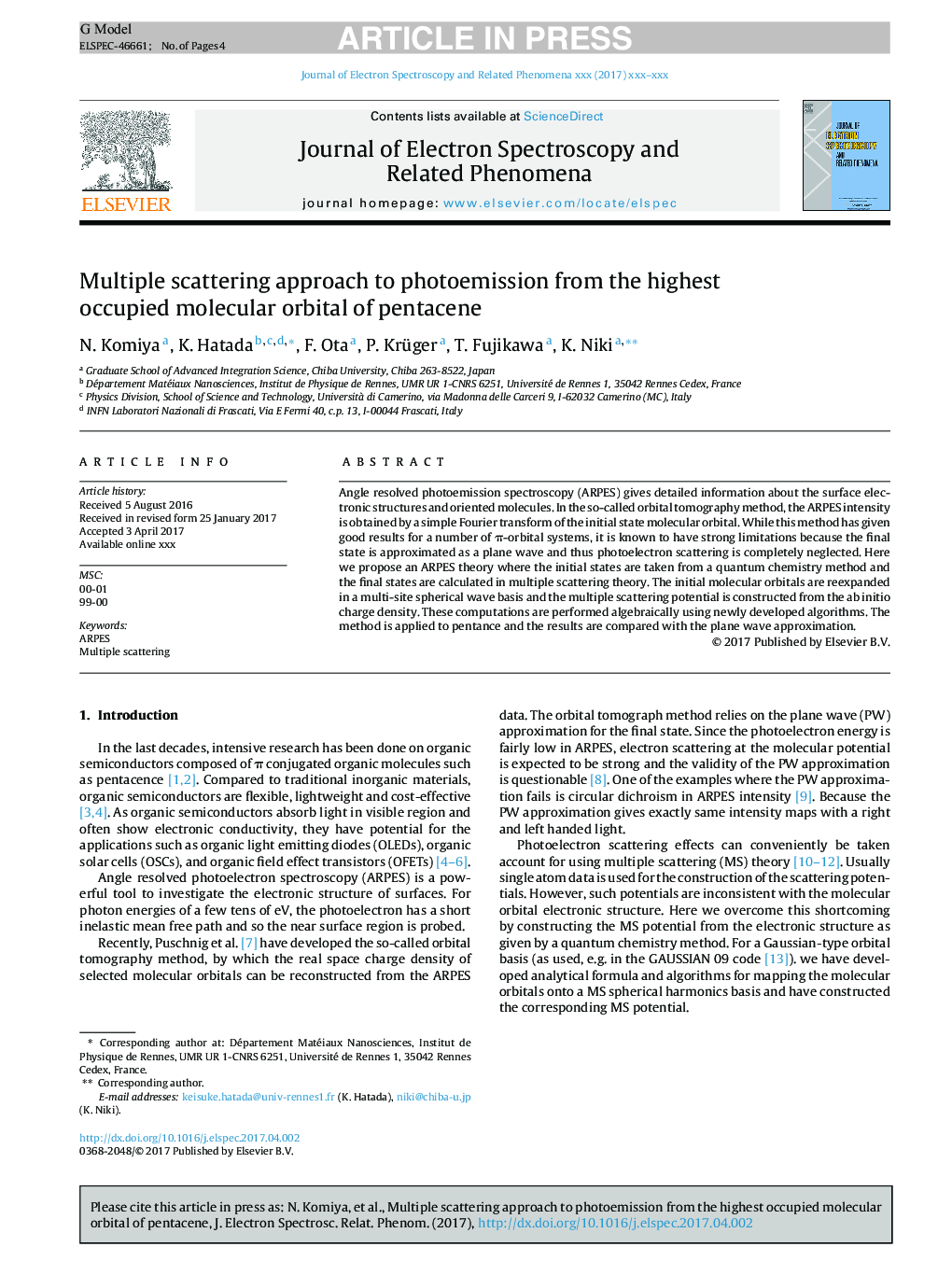| Article ID | Journal | Published Year | Pages | File Type |
|---|---|---|---|---|
| 7839532 | Journal of Electron Spectroscopy and Related Phenomena | 2017 | 4 Pages |
Abstract
Angle resolved photoemission spectroscopy (ARPES) gives detailed information about the surface electronic structures and oriented molecules. In the so-called orbital tomography method, the ARPES intensity is obtained by a simple Fourier transform of the initial state molecular orbital. While this method has given good results for a number of Ï-orbital systems, it is known to have strong limitations because the final state is approximated as a plane wave and thus photoelectron scattering is completely neglected. Here we propose an ARPES theory where the initial states are taken from a quantum chemistry method and the final states are calculated in multiple scattering theory. The initial molecular orbitals are reexpanded in a multi-site spherical wave basis and the multiple scattering potential is constructed from the ab initio charge density. These computations are performed algebraically using newly developed algorithms. The method is applied to pentance and the results are compared with the plane wave approximation.
Keywords
Related Topics
Physical Sciences and Engineering
Chemistry
Physical and Theoretical Chemistry
Authors
N. Komiya, K. Hatada, F. Ota, P. Krüger, T. Fujikawa, K. Niki,
